There’s a vivid memory I have, of sitting around Patrick Moore’s dining room table and discussing the idea for what later became BBC Sky at Night Magazine.
One of the people present – who shall remain nameless – wondered if there would be enough material to fill its pages month after month.
Looking back at how many space and astronomy discoveries there have been over the past few decades since the magazine launched (the 200th issue was published in January 2022), it's fair to say that finding enough content hasn’t been a problem.
There have been many amazing space and astronomy discoveries over the past 20 years or so: a mission to Pluto, the exploration of a rather special comet, exoplanet discoveries that have transformed the search for life in the cosmos and much more.
Here is my pick of some of the biggest discoveries and achievements that have revolutionised our understanding of the cosmos and the ways in which we can study and explore it.
Discover more with our facts about astronomy and space and mind-blowing facts about the Universe.
1
Gaia mapping the Milky Way
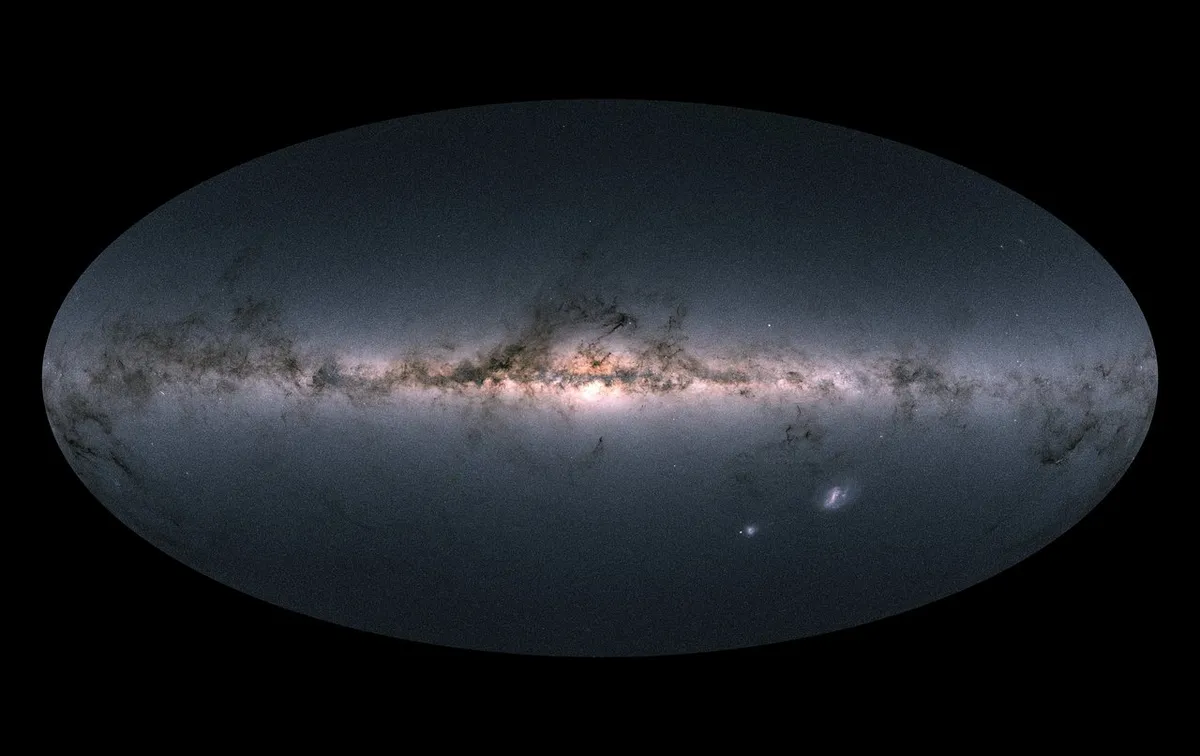
Astronomy has its roots in mapping the night sky, and the latest and greatest map has been provided by ESA’s Gaia spacecraft.
Gaia launched in 2013 and since then it has painstakingly recorded the position and movements of the nearest billion or so stars, allowing researchers to trace the Milky Way’s history like never before.
2
The explosion of exoplanet exploration
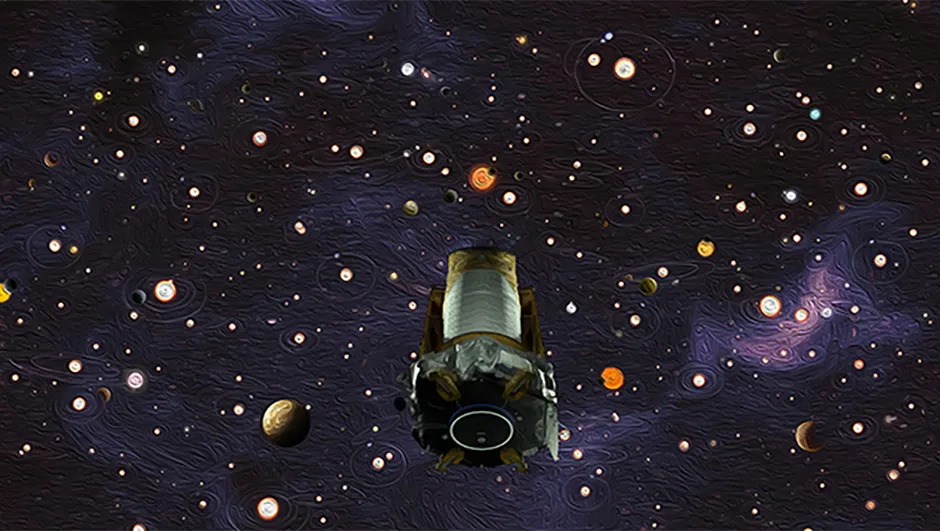
A slow-burning scientific revolution has been underway throughout the past few decades, transforming how we view the Universe.
Thanks to the incredible precision achieved by instruments both on Earth and in space, we now know that exoplanets are common around the stars of the Milky Way, and presumably throughout the Universe.
The Kepler Space Telescope in particular, built in the hopes of discovering a mere handful of planets, delivered a cosmic bounty that was way beyond the dreams of its builders.
We can now look at the night sky as one filled with the potential of millions of worlds.
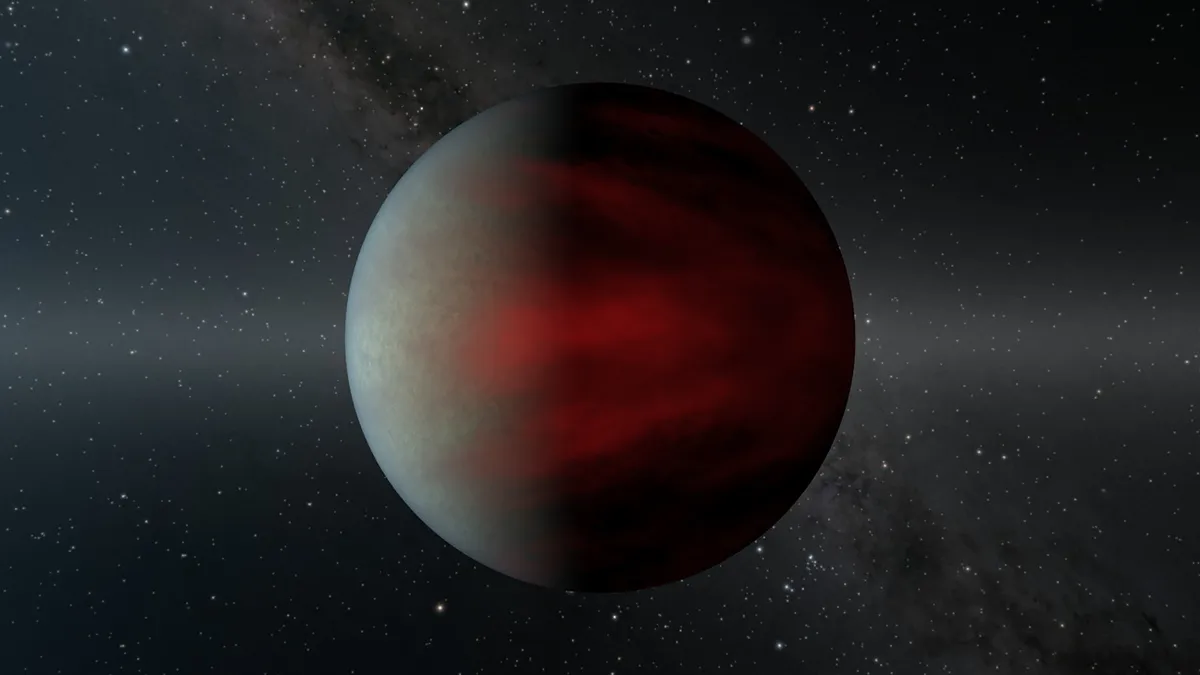
And what worlds they are. All manner of weird and wonderful exoplanets have been discovered, from hot Jupiters, so close to their parent stars that they are literally boiling away, to what seem to be ocean worlds, and from Tatooine-like planets with two suns in their skies, to lost worlds wandering between the stars, almost every kind of planet you can imagine has been found.
Surprisingly, the most common type of planet, a super-Earth – sitting between our own world and something like Uranus or Neptune, size-wise – doesn’t even exist in our Solar System, and the old explanations for the clustering of our rocky worlds close to the Sun with gas giants further out may no longer hold.
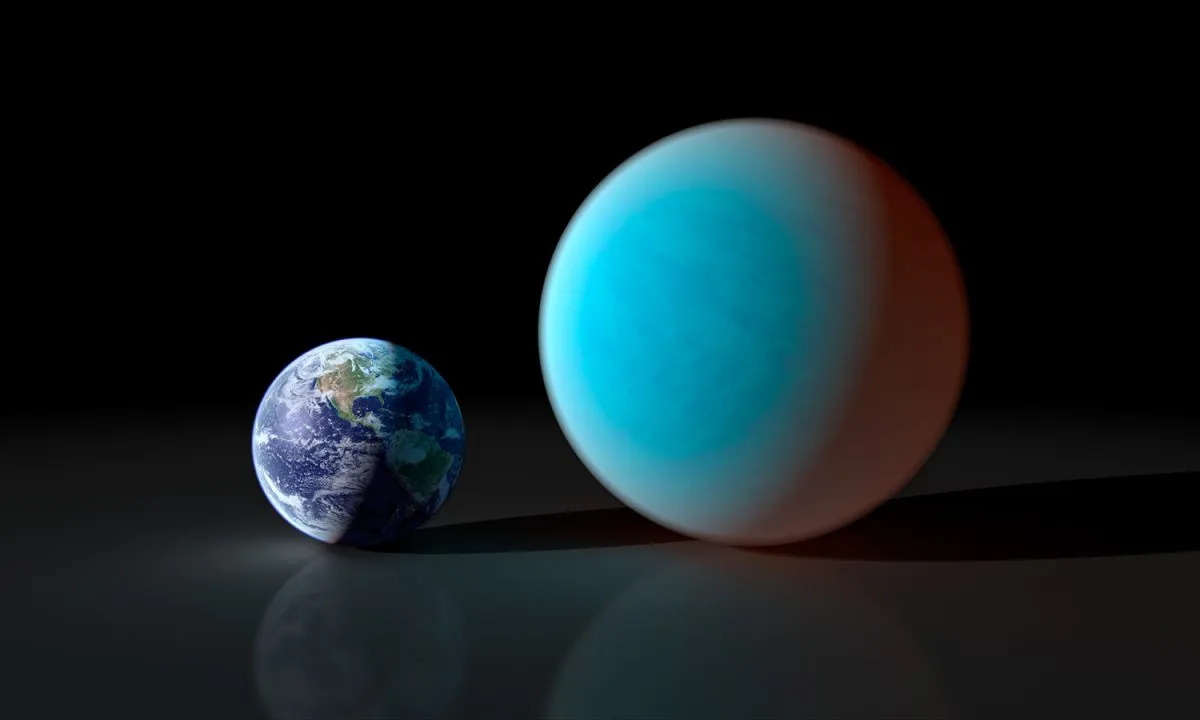
Of course, finding another Earth has long been a dream of scientists and science-fiction authors alike.
Depending on how picky you are, the discovery in 2014 of Kepler-186f, an Earth-sized world in the habitable zone of another star may be the moment that dream came true.
If Kepler-186f has a similar atmosphere and composition as our Earth, then it’s likely it would provide a hospitable home for our kind of life.
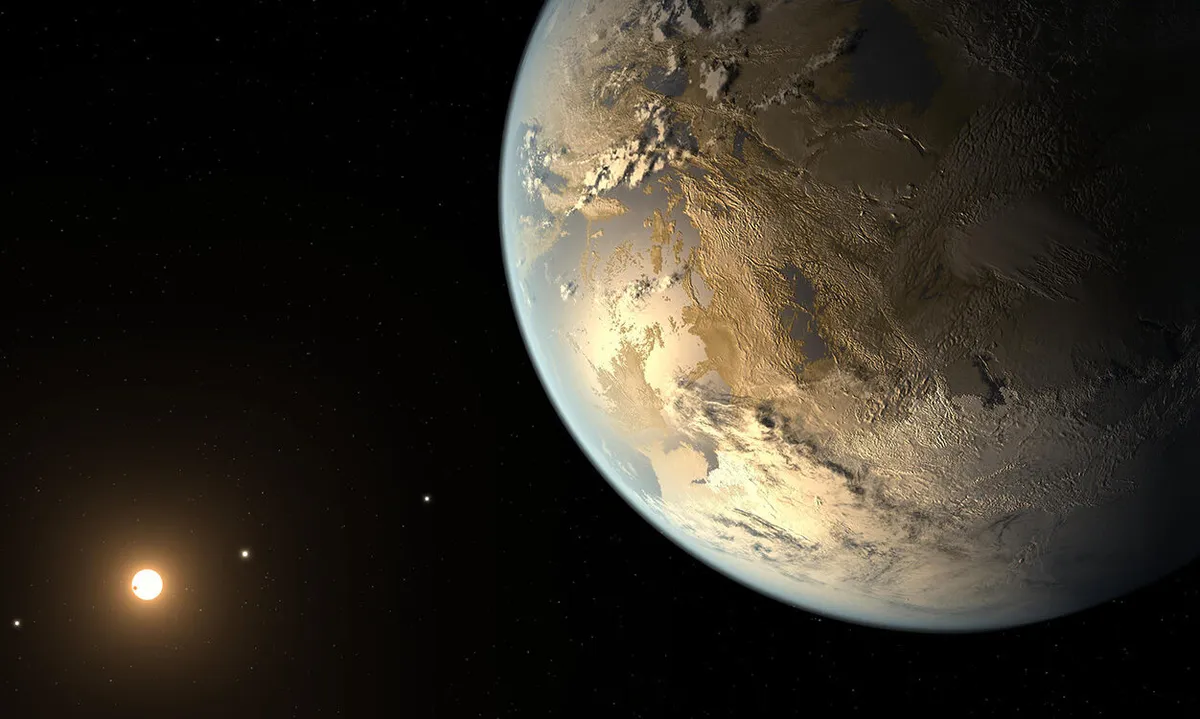
There are many other planets to be found, and instruments and surveys on the way to do the job. But the last two decades will always be the period when we truly realised just how many neighbours our Solar System has.
3
Cassini spies water jets over Enceladus
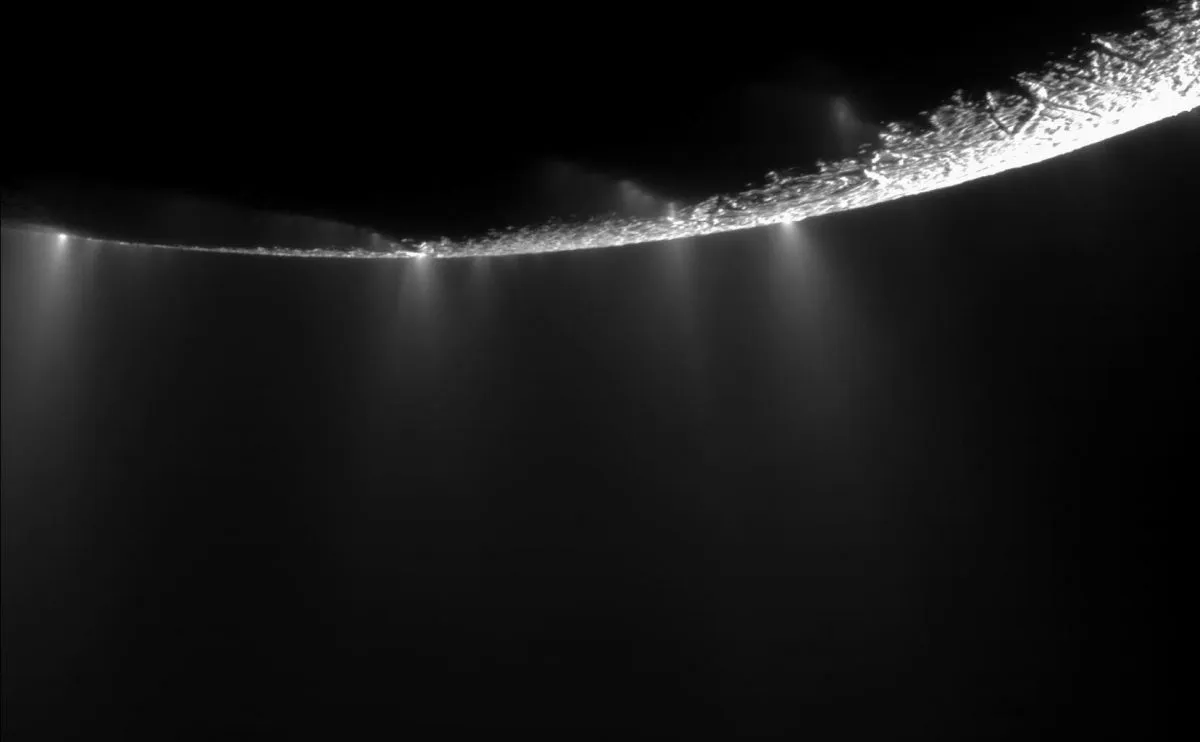
The Cassini spacecraft’s flybys of Saturn’s moon Enceladus, which started in 2005, transformed our view of this tiny world.
While passing over the moon’s south pole, Cassini flew through fountains of water, betraying the existence of an ocean beneath its icy surface.
These fountains turned out to be the source of Saturn’s tenuous E-ring and, more importantly, make this previously obscure world perhaps the best place in the Solar System to look for life.
With increasing evidence for subsurface oceans on Jupiter’s Galilean moons Europa and Ganymede, and maybe even on Pluto, such environments may be much more prominent than rocky worlds like our Earth.
4
Phosphine on Venus
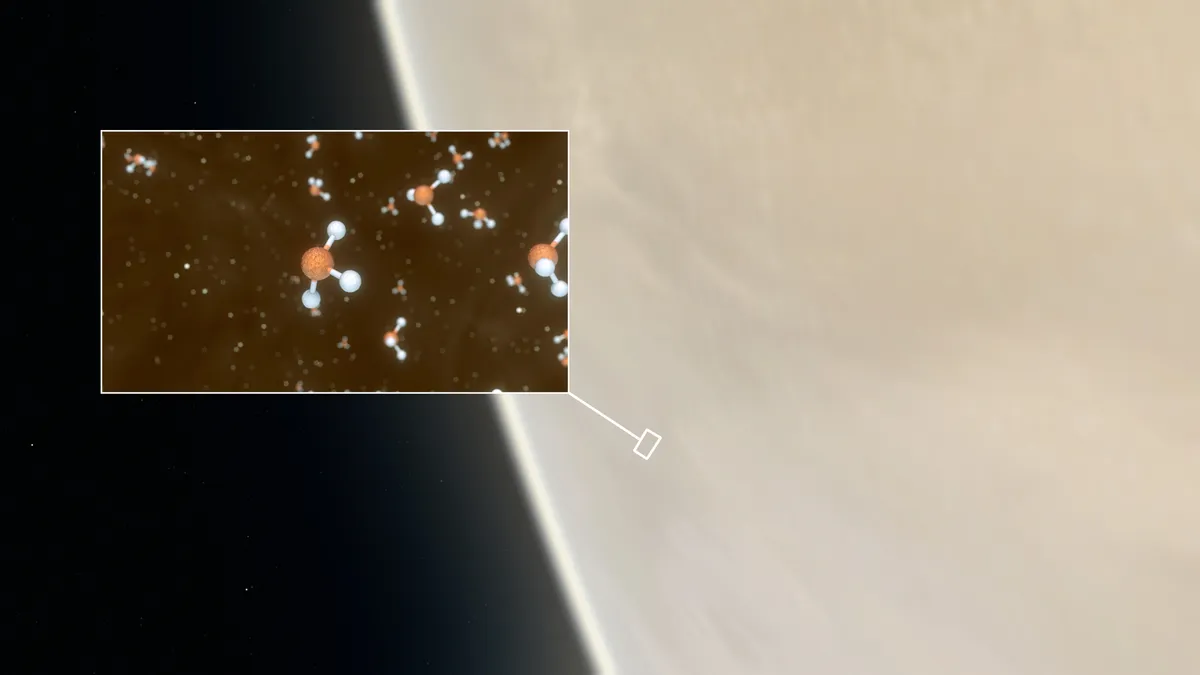
This might be a controversial choice, but I had to include 2020’s announcement of the discovery of phosphine molecules high in the atmosphere of Venus by Professor Jane Greaves, based at Cardiff University, and a team of international astronomers.
Phosphine on Earth is produced only by life, and so as we reported in an exclusive episode of The Sky at Night its presence might – I stress, might – indicate the presence of life in a location where it was least expected.
The Cardiff team’s results have been criticised, but the controversy will only be resolved by new data, which is expected to arrive soon.
Find out more about the discovery in our podcast interview with co-discoverer Emily Drabek-Maunder.
5
Methane on Mars
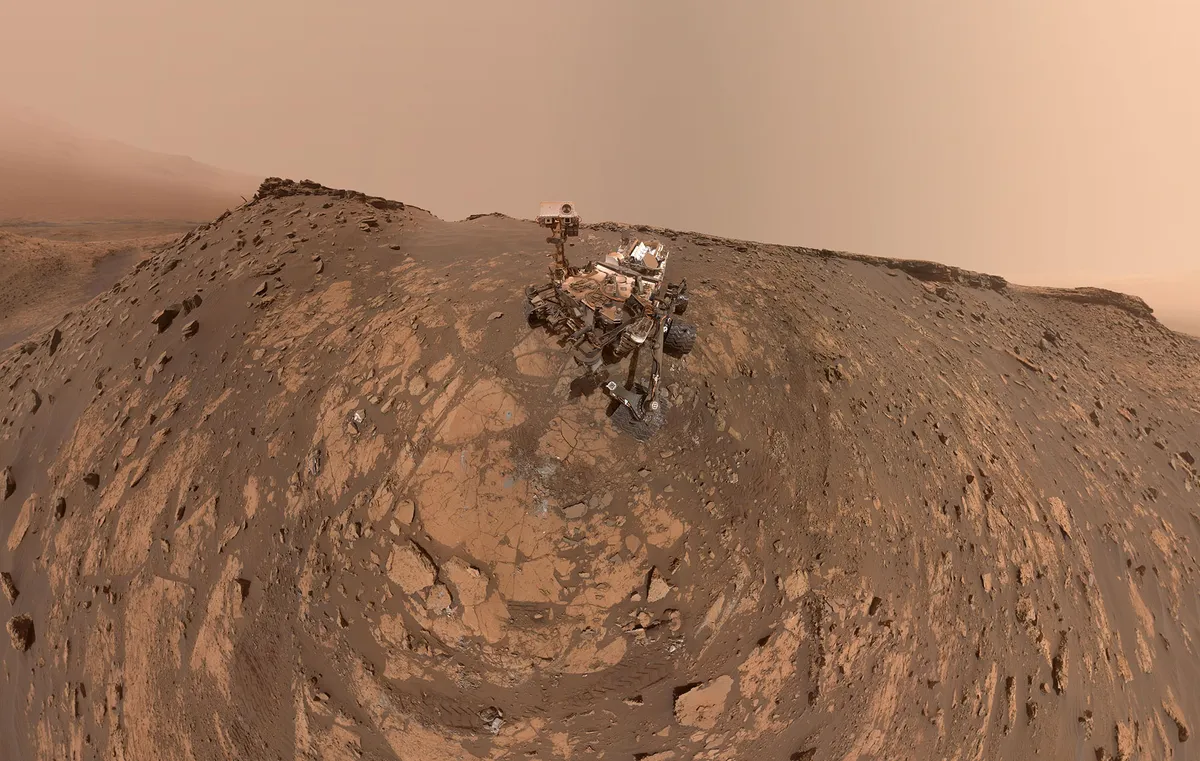
Mars has been the target of more missions over the past few decadesthan any other object, and together they have told us a roughly coherent story about the Red Planet’s past.
We can now be sure it was once a wet world, with oceans and lakes, and all the raw materials for life in place.
Yet new questions have arisen, chief among them the reason for the methane detected occasionally by the Curiosity rover, starting in 2013, but which is strangely not detected from orbit.
Is it a sign of life clinging on with methane-producing bacteria under the Martian surface, the result of a geological process, or an instrumental artefact or a contaminant? We just don’t know.
6
Rosetta explores a comet
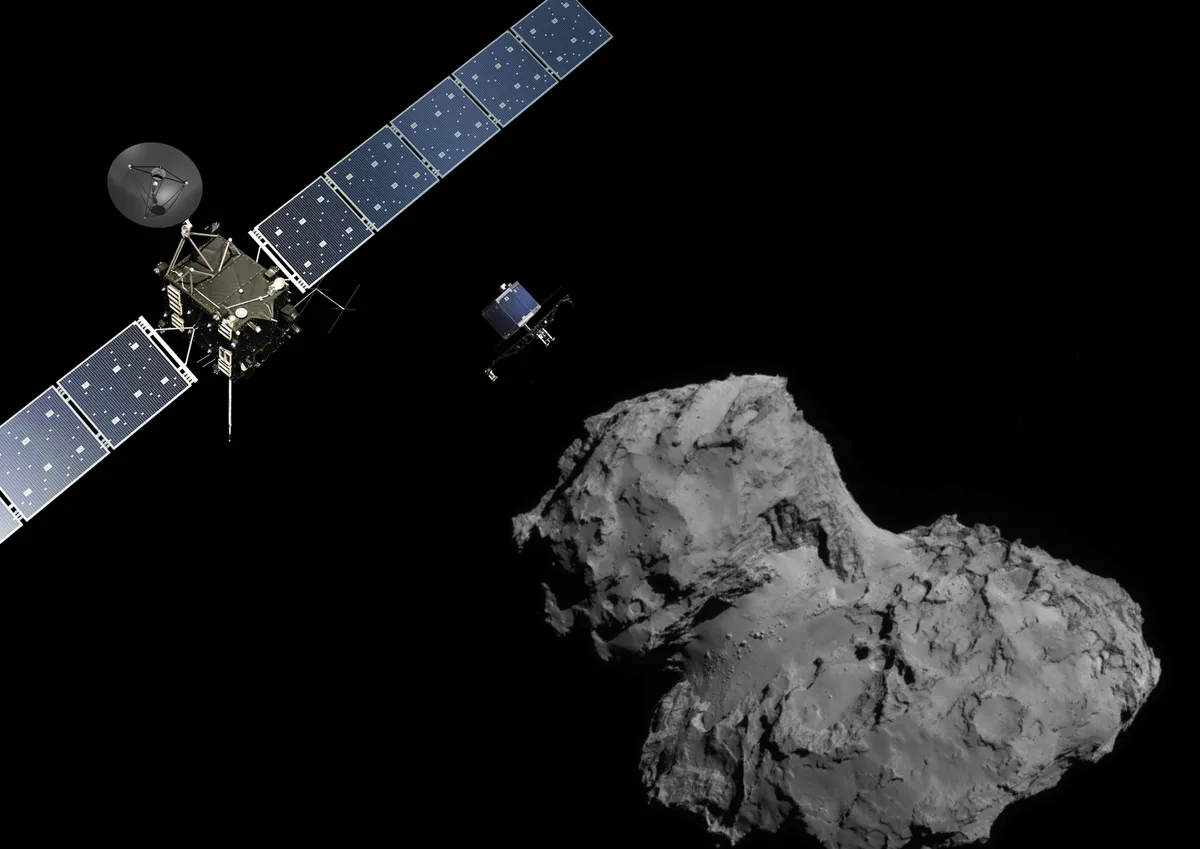
Of all the missions I’ve been lucky enough to cover, and to write about, Rosetta is special.
The spacecraft’s adventures visiting Comet 67P/Churyumov–Gerasimenko provided excitement from the moment the spacecraft woke up from hibernation in 2014 and approached the duck-shaped comet, right up until its eventual impact with the surface in 2016 – a moment I witnessed from mission control.
In between we had the plucky Philae lander bouncing across the surface and a European spacecraft matching any of NASA’s epic missions of exploration.
Scientists are still puzzling over what Rosetta told us about the mysterious icy object it visited, but Rosetta was clearly a triumph.
7
New Horizons flies by Pluto
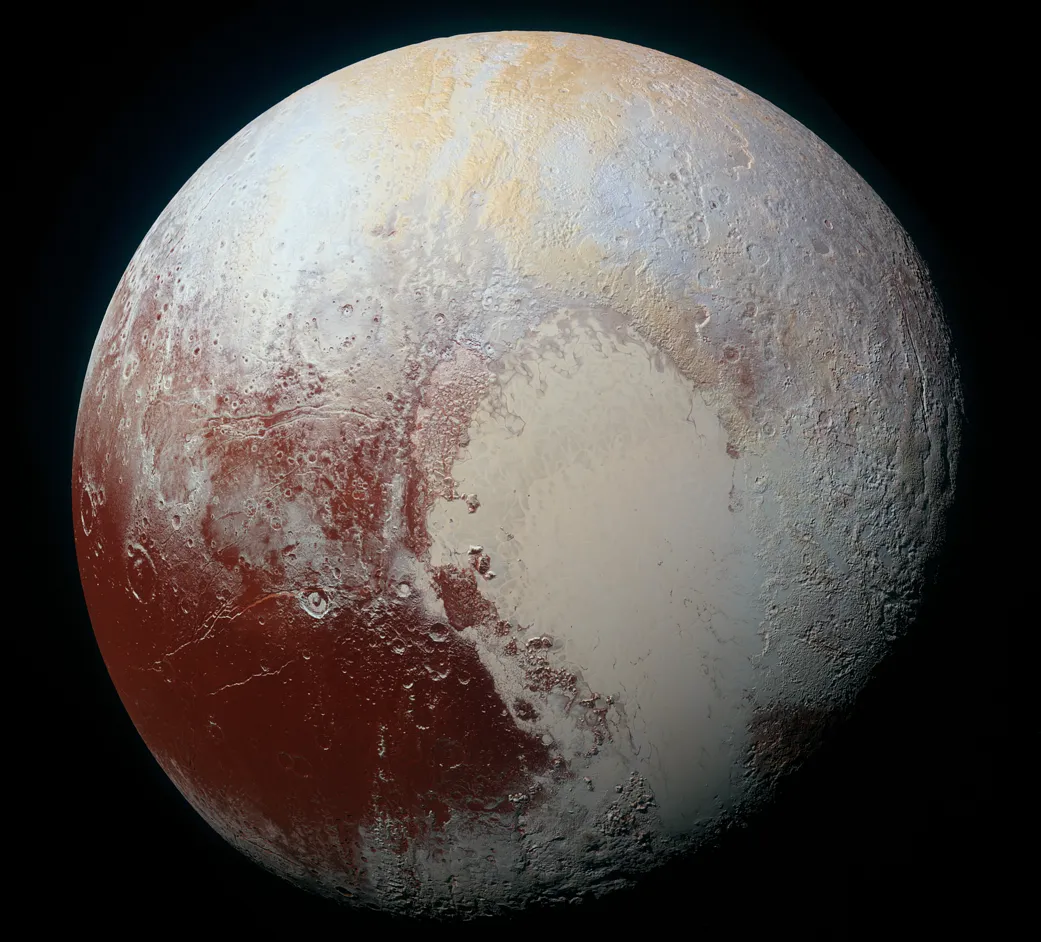
To Dr Alan Stern, the leader of the team that designed, built and flew the New Horizons mission, its reconnaissance of Pluto completed the American exploration of the main Solar System bodies.
The images of this fascinating – and surprisingly complex surface – taken during its flyby on 14 July 2015 astounded and amazed the world.
8
Hubble's last servicing mission
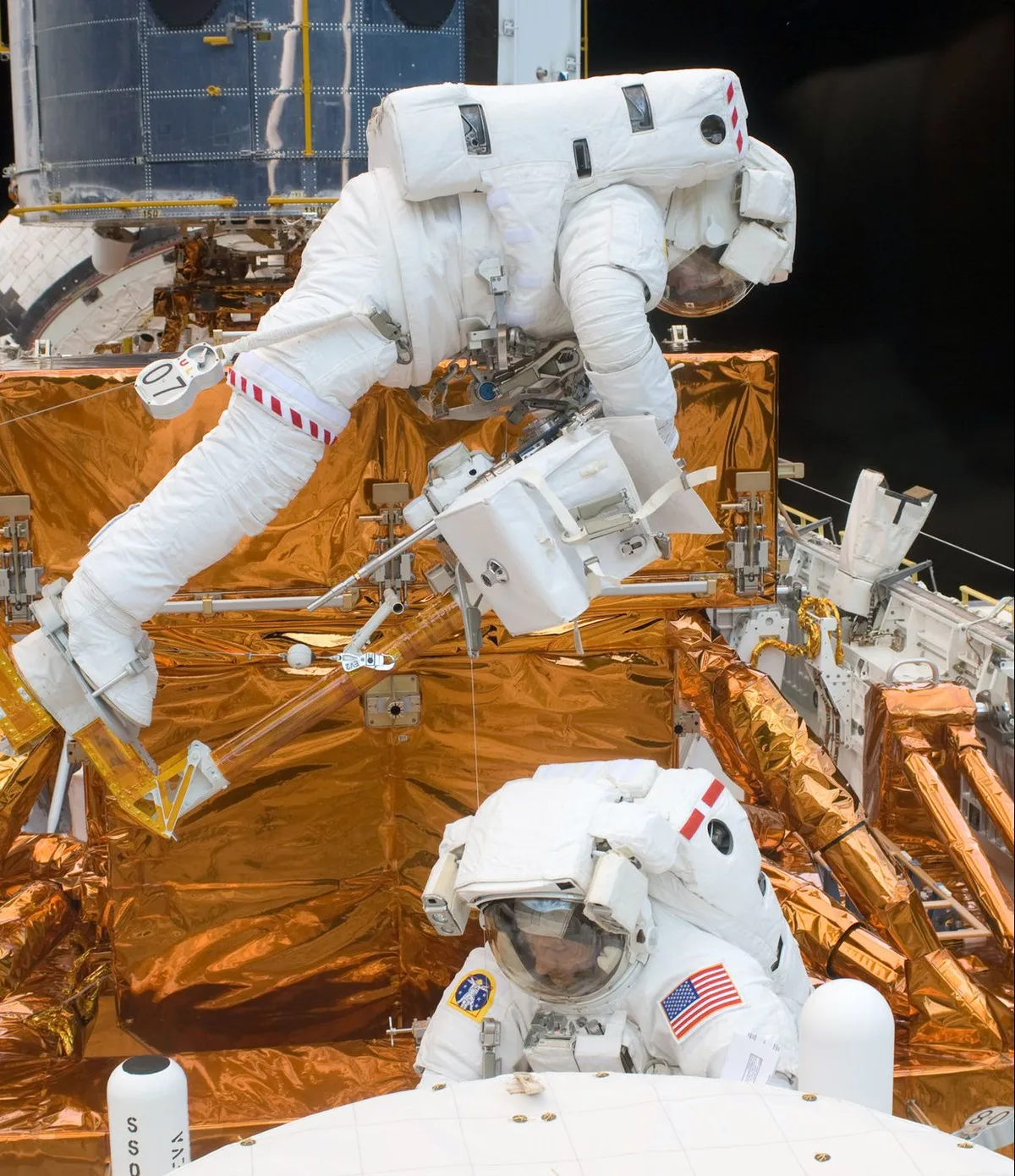
After the tragic loss of the Space Shuttle Columbia, Servicing Mission 4 was initially cancelled.
Determination and bravery eventually led to a rethink, and the mission to service the Hubble Space Telescope went ahead in May 2009.
The Hubble servicing mission fixed major problems with two of the space telescope’s instruments, repaired systems never designed to be fiddled with in orbit and installed new hardware.
9
Fast radio bursts

When Duncan Lorimer and David Narkevic went looking for pulsars in old data from the archives of the Parkes radio telescope in Australia in 2007, they didn’t know they were about to make one of the most exciting discoveries in decades.
They found the ‘Lorimer burst’ recorded in the Parkes data in 2001, which became the first fast radio burst (FRB) to be described.
It is now known that these still mysterious events come from distant galaxies, and that they may be the result of collisions of neutron stars, or in some cases the result of such a body interacting with a massive, main sequence star.
With thousands of FRBs catalogued, time will tell what they are.
10
Gravitational waves
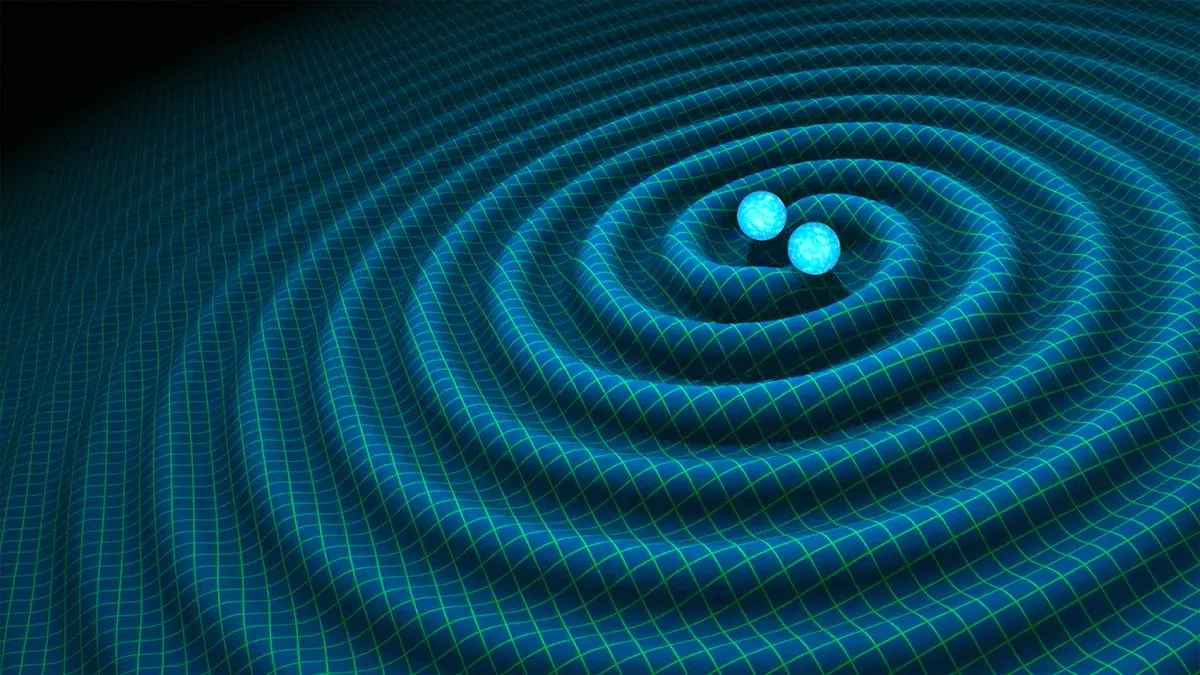
A spectacular triumph of experimental physics that builds on more than four decades of hard work, the detection of the first gravitational waves by the Laser Interferometer Gravitational-Wave Observatory (LIGO) experiment in 2015 provided a new test of Albert Einstein’s theories, opened up a new window on the Universe and set the stage for what will be a major part of the story of 21st-century physics.
The ripples in space-time detected by LIGO are tiny, but they brought us news of some of the most violent and energetic processes in the Universe: the collision of two black holes in a far distant galaxy, 1.3 billion lightyears away.
11
Dark matter in the Bullet Cluster
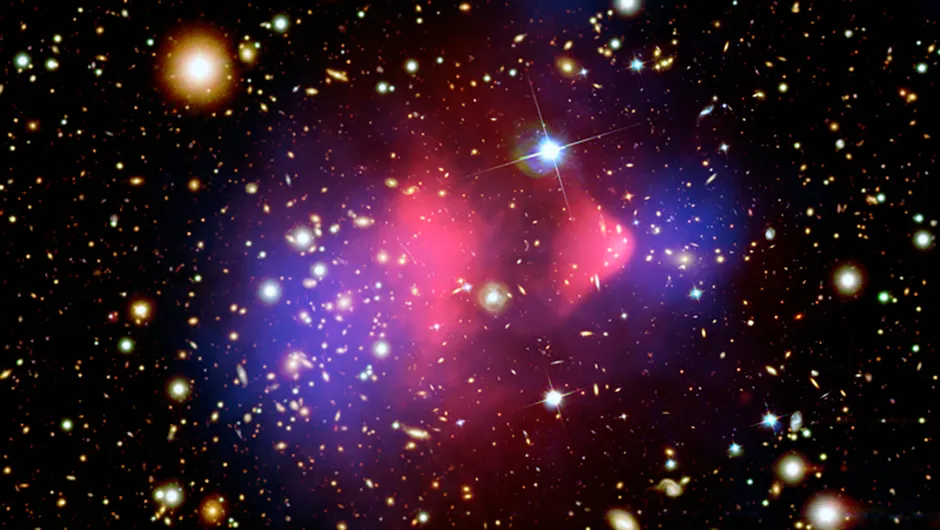
I had hoped that by now we’d have some idea of what the Universe is made of.
Yet with no compelling experimental evidence to support what type of particle is responsible for dark matter, alternatives (such as tweaking the theory of gravity) are looking more alluring.
And yet, in the last 16-plus years, dark matter’s effects on the movement of stars and galaxies has been seen more clearly.
In the mid 2000s, astronomers mapped the mass of the Bullet Cluster and found the distribution was different to what was expected with only normal matter, even when you use an alternative theory of gravity, providing evidence that dark matter is real.
12
The Hubble tension

The so-called Hubble ‘tension’ reflects a stubborn disagreement between the speed of the expansion of the Universe as measured locally and the one inferred from observations of the early cosmos.
Is this a vital clue that leads us to some technical detail of how observations are made? I don’t know, but neither does anyone else.
13
The rise in private spaceflight
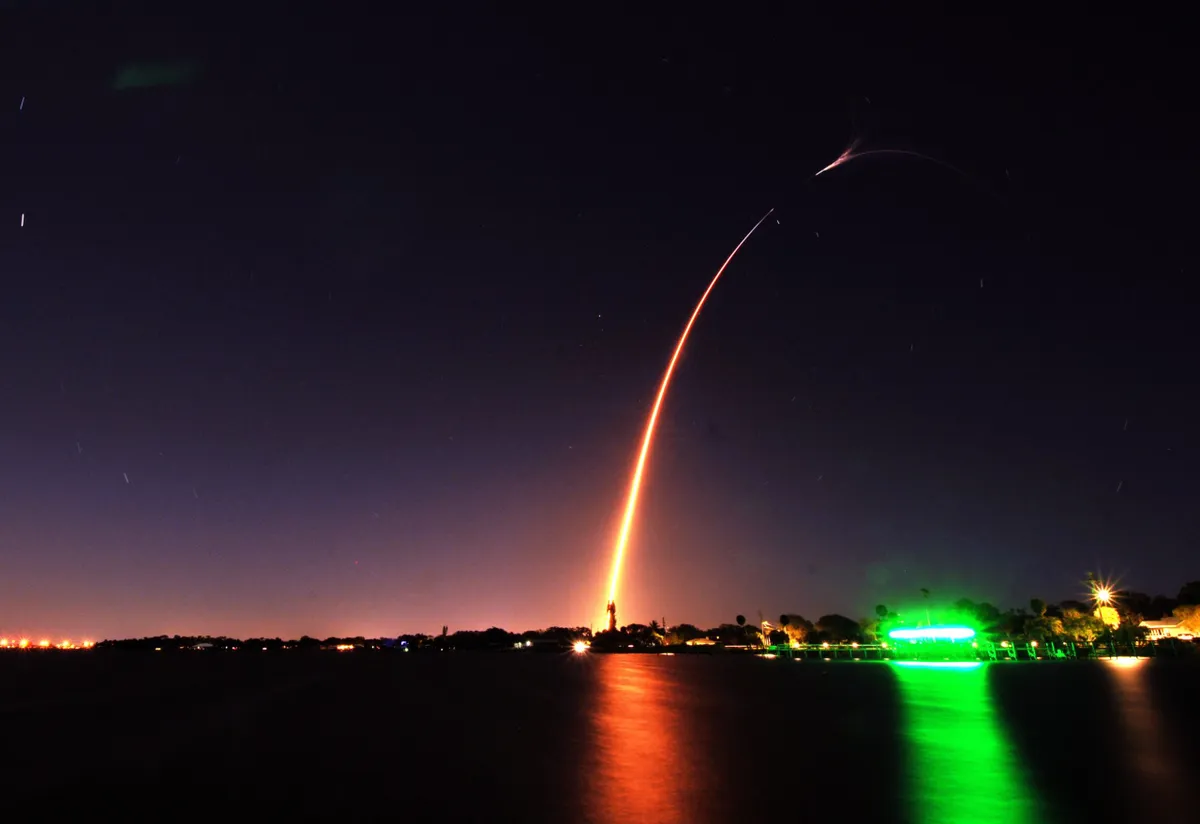
I remember vividly the moment I realised that SpaceX was going to be a transformative company. Sitting in front of my laptop towards the end of 2012, I watched as the Grasshopper test rocket (a prototype of what would become the Falcon 9) lifted gently off the ground, ascended into the air and then, as no rocket before it had done, lowered itself gently back down to the pad.
Until then, the considerable achievements of SpaceX, including the launch of Dragon to the ISS had seemed like a useful way of reproducing what governments had been doing for decades. Now, the prospect of a truly reusable vehicle capable of reaching orbit promised something new.
Buzz about ‘new space’ companies goes back a bit. SpaceShipOne captured the $10m Ansari X-prize for reaching space twice in 2004.
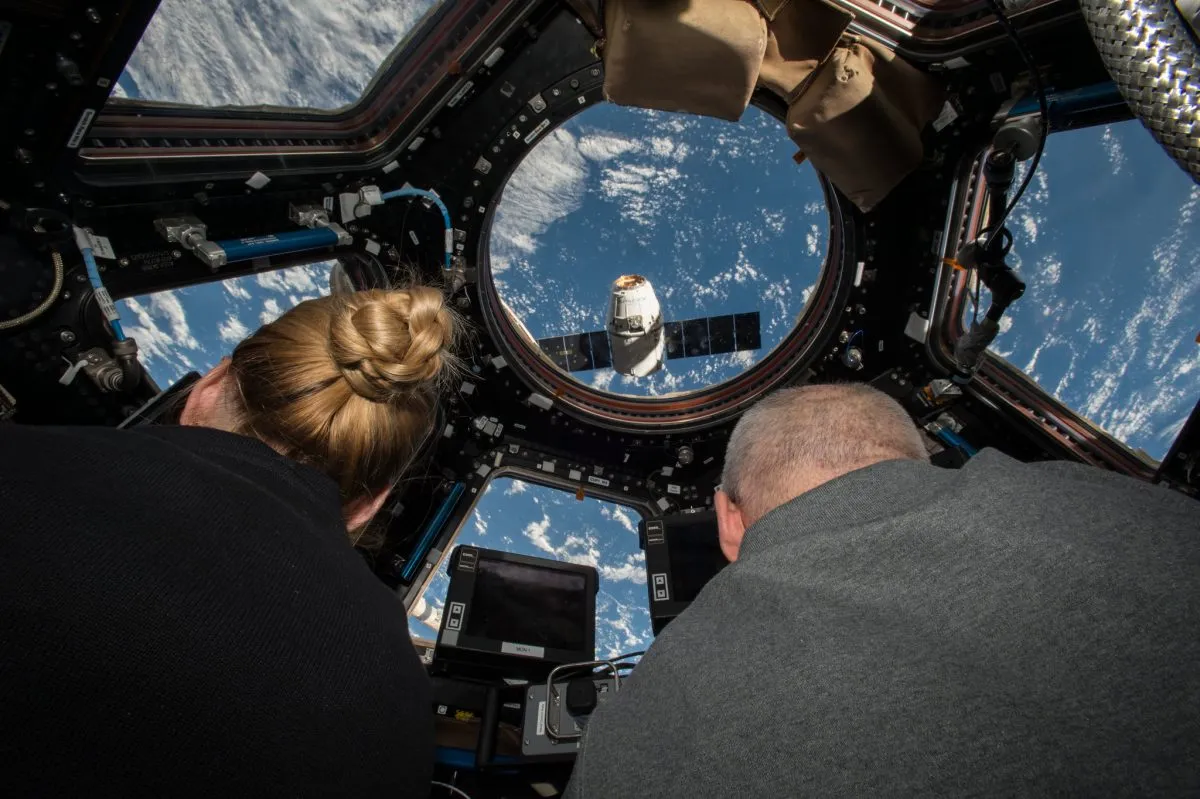
Now the promise of those early dreams is being realised, with SpaceX ferrying NASA astronauts to the ISS, Blue Origin taking billionaires (and William Shatner) on the joyride of a lifetime, and companies competing to launch satellites for prices their customers wouldn’t have dreamed of a decade ago.
The next 20 years will reveal the impact of this shift. Will the cost of sending something to orbit decrease spectacularly?
Will the momentum carry explorers to the Moon, Mars or beyond?
Will tens of thousands of satellites in low Earth orbit obscure our view of the night sky forever? We’re about to find out.
14
First image of a black hole captured
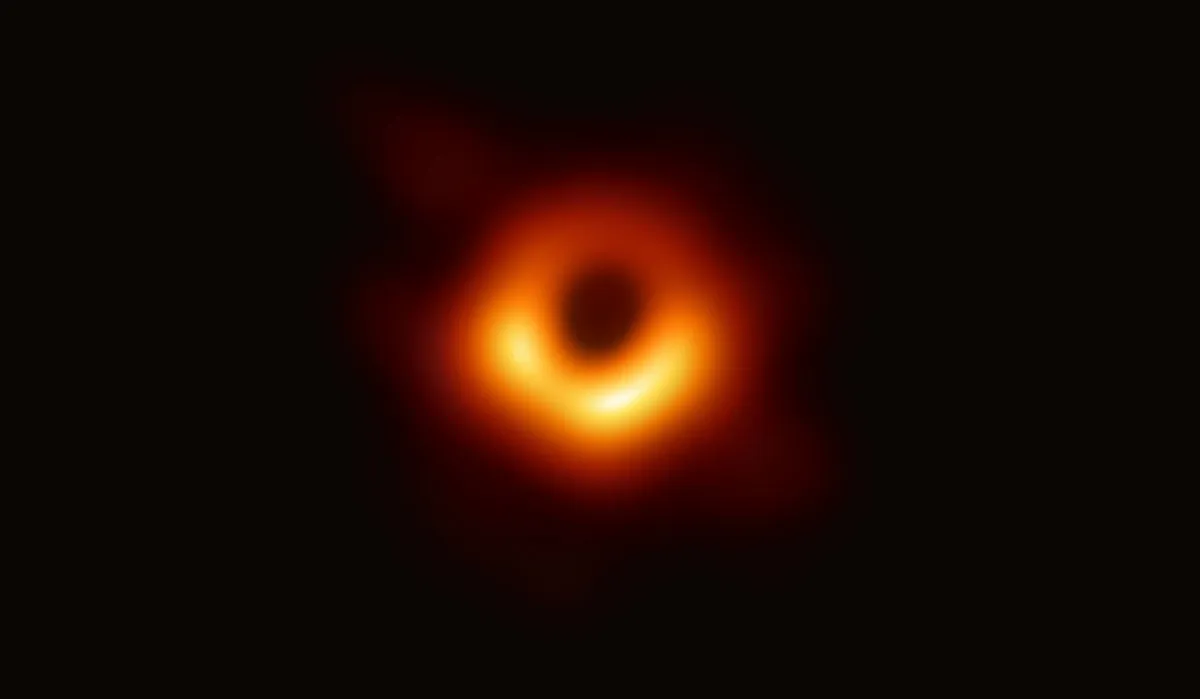
The Event Horizon Telescope image of the shadow of the black hole at the heart of the galaxy M87 was an instant classic when it was unveiled in 2019.
Produced by a global network of radio telescopes, it reveals the complexity of the events taking place in the region just beyond the black hole’s event horizon.
For more on this, read our interview with astronomer Heino Falcke on how they photographed a black hole.
This article originally appeared in the January 2022 issue of BBC Sky at Night Magazine.
